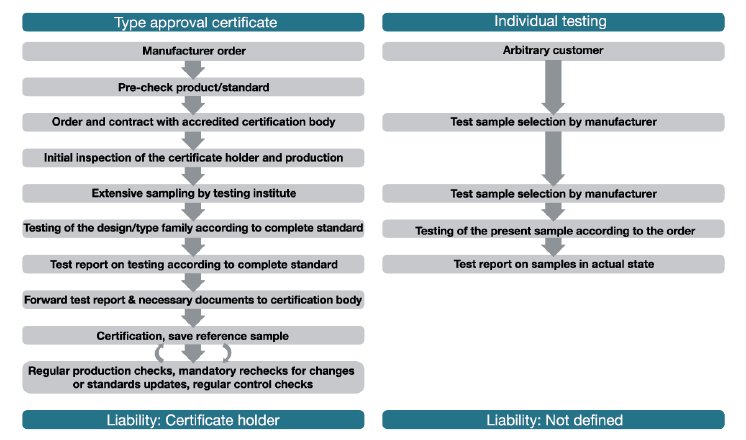Test institutes are repeatedly commissioned to test combinations of PV connectors from different manufacturers. This takes place in individual testing; however, it is dangerous to conclude from these results that PV connectors from different manufacturers can be safely combined in a PV system and operated safely over the long term.
Testing standards: minimum requirements for safety
The existing testing standards for PV connectors, such as IEC 62852:2014 + A1:2020 and UL6703, were created for the design and testing of connectors of the same type or type family from one manufacturer. These standards always refer to the connection of socket and plug within a type family and not to the respective individual parts of a connector.
Guido Volberg, Senior Consultant Product Regulatory Affairs at Stäubli Renewable Energy explained: “The testing standards above describe the minimum requirements for the safety of PV connectors, provided they have been developed and manufactured under the same quality management system, the same production processes, and manufacturing tolerances, and sufficient knowledge of the materials and technologies used. Also, liability is considered if there is damage. Today’s standards are therefore not suitable for making a statement about the safety of combinations of PV connectors from different manufacturers.”
This fact also applies if two manufacturers designate their connectors as compatible on the condition that they inform each other of safety-relevant changes to the product. Even the smallest modifications can have a significant impact on the long-term function of the connection.
Damages and liability
Cross-connections can lead to burned connectors, arcing, and, in extreme cases, fires. There are various reasons for these common problems and damage when using combinations of different PV connectors.
Guido Volberg amends: “Among other things, a chemical incompatibility or also different thermal expansion parameters of the metal contact can lead to contact corrosion after some time. Under such circumstances, not only the project and the PV system are at risk, but also people and nature. The question then arises as to who is responsible for such damage. The manufacturers of connectors are not liable if they exclude the combination with third-party products. The PV system is implemented by the installer, which is why he can be held responsible in most cases.”
The type approval certificate
The internationally recognized design type certificate signals the tested and certified safety and quality of a series. It is issued by an accredited certification institute known as a notified body. To obtain such a certificate, a positive evaluation of the manufacturer and its production by the testing body are the first prerequisite. Not only is the production process, including handling of raw materials in incoming goods through to the dispatch of finished products, inspected, but also quality management in all its facets.
This comprehensive testing is repeated at regular intervals to be able to hold the certificate. These recurring tests, which also include the points of the initial test, ensure a consistent quality of the products. These tests are performed on extensive sample quantities, usually taken from production by the expert.
The test report from individual testing
A test report from individual testing is not a certificate. In contrast to a design type certification, this only describes the actual state of the existing sample, without taking into account the production processes or manufacturer’s quality management. This report may be commissioned by any party without agreement.
The one-time analysis is performed only on individual samples. The customer decides at the time of application what is to be tested and how. It is therefore also possible for the customer to establish the requirements whose fulfillment is supposed to be verified by testing the respective individual product sample. Based on these reports, no statement can ever be made about the long-term safety of a product combination, and much less a series.
Knowing that misleading, competition distorting, and even dangerous statements can be made based on such a report, a reliable test institute points out this factual situation with a clear statement in the test result.
Important to know
A test report for individual testing is not the same as a design type certification. Deriving compatibility from it is deceptive. Comparing the various procedures and basic principles behind design type certifications and individual testing makes clear that the respective results differ with regard to liability. No statements regarding the safety of products and product families can be made based on the test report from individual testing. Only the status of the existing sample at the time of the respective individual testing can be evaluated. In the event of damage, product liability is not regulated, and responsibility usually lies with the installer. Both the manufacturer and the testing institute have noted a disclaimer.
The currently valid product safety standards and installation standards of the IEC prohibit cross-connection. Relying on individual testing reports to legitimize the cross-mating of PV connectors of different manufacturers can lead to significant risks and loss of safety for the environment, life and limb, but can also have critical consequences concerning the project and financial success.
Matthias Mack, Vice-President Renewable Energy at Stäubli stressed: “Helping to shape the future of safe PV solar energy is a strategic commitment for us more than ever before. Our original MC4 PV connectors connect more than 465 GW of PV power worldwide, some 50% of the total capacity. This makes it all the more important for Stäubli to take the responsibility for safety and reliability in this industry.”


